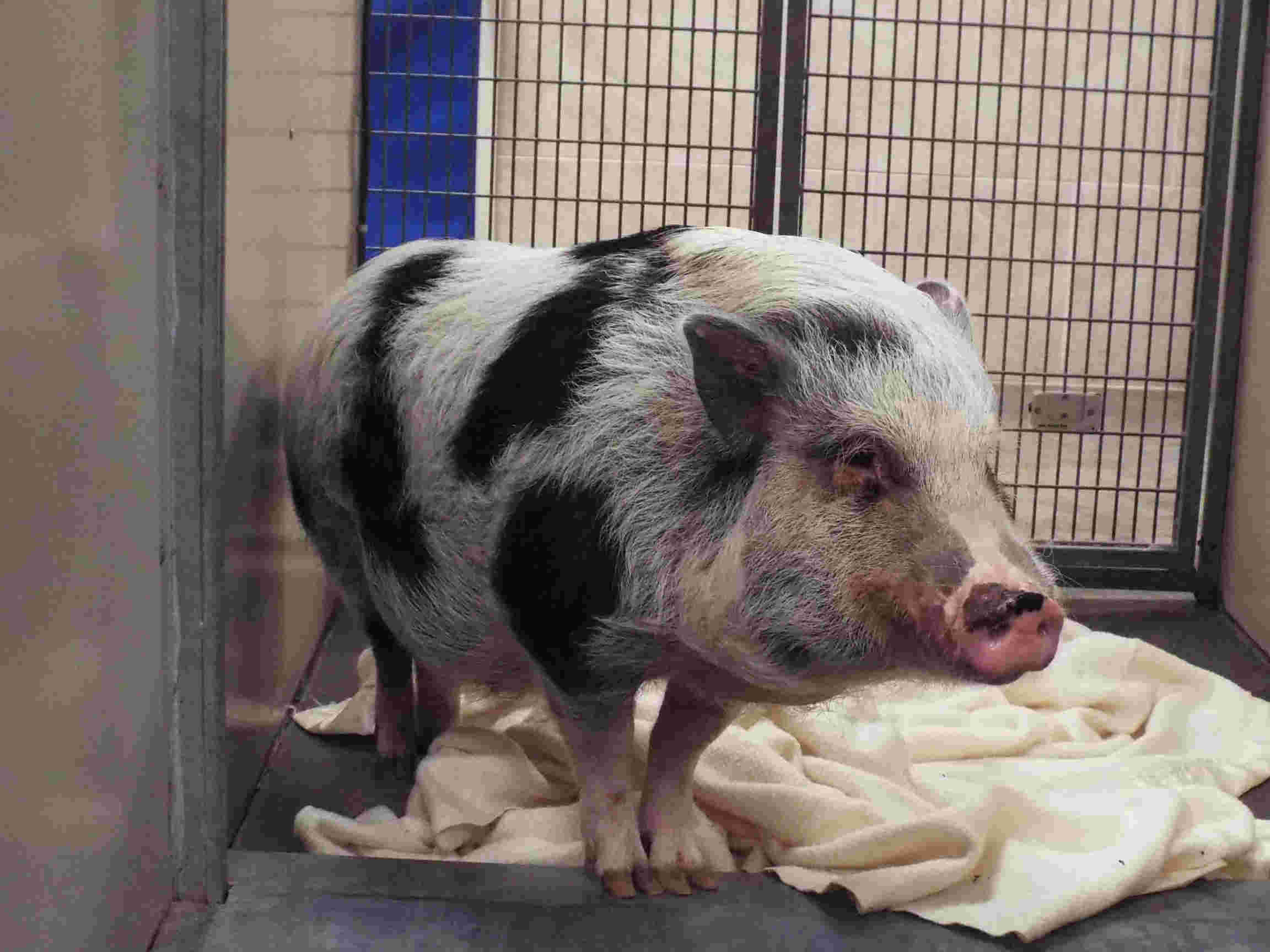A Kansas State University researcher and her team are taking a closer look at how tiny organisms living in the guts of pigs can help prevent costly respiratory diseases.
Megan Niederwerder, assistant professor of diagnostic medicine and pathobiology in the College of Veterinary Medicine, led a recent study aimed to identify gut microbiome characteristics associated with improved outcome in pigs immunized against porcine reproductive and respiratory syndrome virus, or PRRSV, after co-infection with PRRSV and porcine circovirus type 2, or PCV2.
The article, “Gut microbiome associations with outcome following co-infection with porcine reproductive and respiratory syndrome virus (PRRSV) and porcine circovirus type 2 (PCV2) in pigs immunized with a PRRS modified live virus vaccine” was published in the March issue of Veterinary Microbiology.
“Our latest work is focused on how the gut microbiome impacts the response of growing pigs to a respiratory vaccine,” Niederwerder said. “Beneficial microbes living in the gastrointestinal tract play an essential role in the development and regulation of immunity. We now understand that this role extends to viral respiratory vaccines in addition to viral respiratory diseases.”
PRRSV and PCV2 are two of the most significant pathogens affecting swine production worldwide, resulting in clinical signs of respiratory disease and reduced weight gain. PRRSV is the most costly disease of swine in the U.S., with estimated losses of $664 million each year.
Modified live virus vaccines are widely used to reduce PRRS-associated losses and decrease respiratory disease in pigs. Currently available vaccines, however, are generally considered inadequate for disease control and additional tools are necessary to reduce the effects of PRRS on swine, Niederwerder said.
“The gut microbiome is one alternative tool that can improve response to PRRSV vaccines and PRRSV infection,” Niederwerder said. “In the current study, we identified several gut microbiome characteristics associated with improved growth rates of nursery pigs after PRRS vaccination and co-infection, including increased fecal bacterial diversity.”
Further gut microbiome characteristics associated with increased growth rates of vaccinated pigs included increased Bacteroides pectinophilus, decreased Mycoplasmataceae species diversity, higher Firmicutes: Bacteroidetes ratios, increased relative abundance of the phylum Spirochaetes, reduced relative abundance of the family Lachnospiraceae, and increased Lachnospiraceae species C6A11 and P6B14.
The results of this study provide foundational evidence that the gut microbiome in swine plays a role in the efficacy of PRRS vaccines during a respiratory infection disease model.
“Identifying gut microbes which enhance efficacy of the currently available and widely used PRRS vaccines is a way to improve the tools we already have in our toolbox for PRRS control,” Niederwerder said. “Addressing complex infectious diseases require a multimodal approach and expanding the traditional methods by which we improve swine health benefits pigs and producers.”
Funding for the study was provided by the U.S. Department of Agriculture National Institute of Food and Agriculture; the state of Kansas National Bio and Agro-Defense Facility Fund; and by the Lawrence Livermore National Laboratory’s Laboratory Derived Research and Development Effort.



